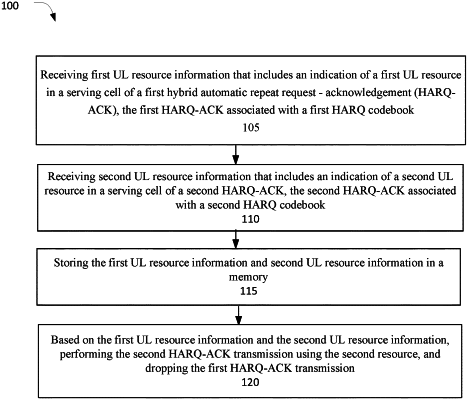| CPC H04L 1/1812 (2013.01) [H04L 1/1854 (2013.01); H04L 5/0055 (2013.01); H04W 72/21 (2023.01); H04W 72/23 (2023.01)] | 17 Claims |

|
1. One or more non-transitory computer-readable media storing instructions that, when executed by one or more processors, are to cause a user equipment (UE) to:
determine a first priority corresponding to a first hybrid automatic repeat request-acknowledgement (HARQ-ACK) codebook for a first HARQ-ACK in a first physical uplink channel transmission;
determine a second priority corresponding to a second HARQ-ACK codebook for a second HARQ-ACK in a second physical uplink channel transmission, wherein the first priority is lower than the second priority, and wherein at least a portion of the first physical uplink channel transmission overlaps with at least a portion of the second physical uplink channel transmission; and
based on the determined first priority being lower than the determined second priority, perform the second HARQ-ACK transmission in the second physical uplink channel transmission, and drop the first physical uplink channel transmission;
wherein to determine the first priority and the second priority is based on one or more downlink control informations (DCIs) that include one or more priority indicators that indicate that the first priority is lower than the second priority.
|